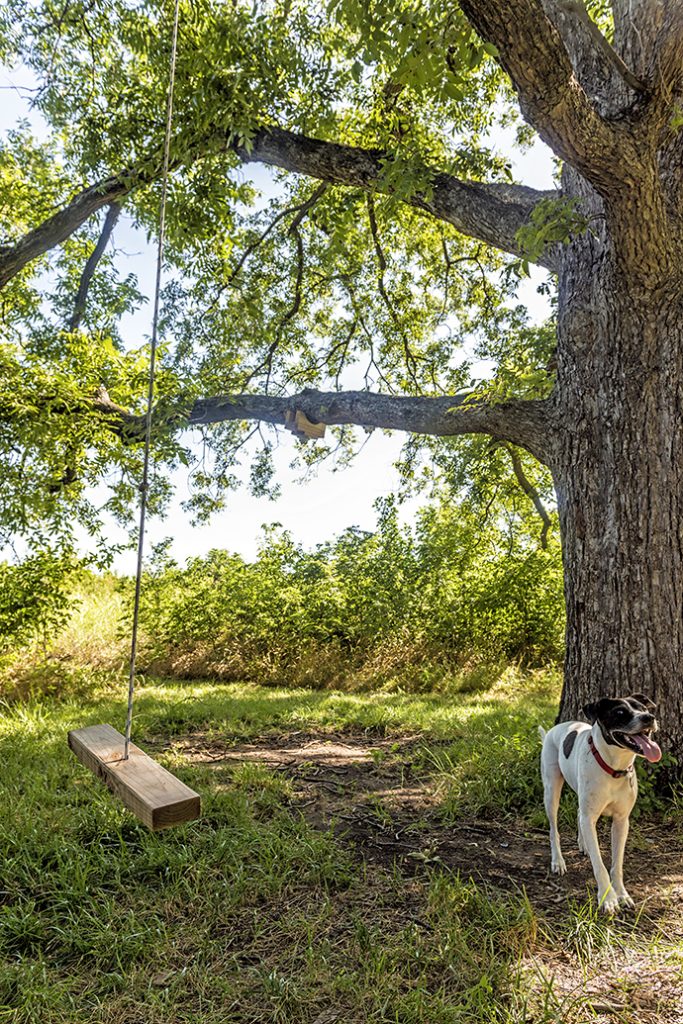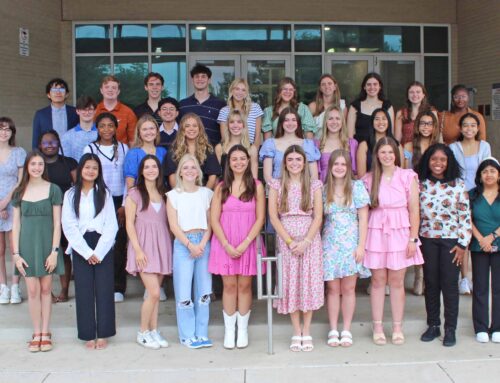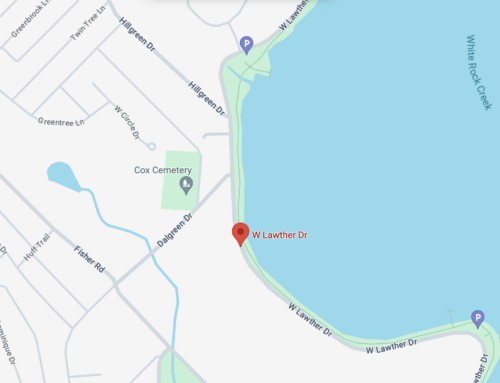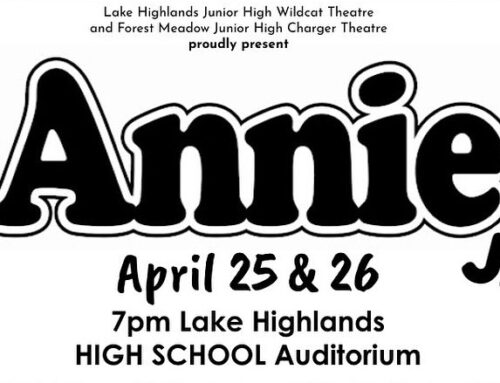The Advocate last fall published a story about Harry S. Moss Park, which essentially runs alongside upper Greenville Avenue between Walnut Hill and Royal Lane.
We explored the park’s engrossing history and its myriad uses as well as both neglect and unofficial upkeep over the past four or so years. At the time of that publication, the City of Dallas seemed a little stuck — they had failed for several years running to maintain the portion of the park that contains natural blackland prairies. Service area manager Jeremy McMahon told us that while the city is responsible for about 25 acres of prairie, maintenance has fallen by the wayside for the past several years, due to a lack of manpower and know-how. “It takes a special expertise to get that right — know what to pull, what to mow,” McMahon has said. “All we want is for all of these things to be done the right way.”
Meanwhile the Park Department was contending with what they say is a rogue caretaking of parts of the park. One of those well-intentioned, supremely passionate neighbors, Bill Grunnah, in fact, was the first to call our attention to problems on the prairie. Grunnah and his friends are “oldtimers” he says, who remember what the land is supposed to look like. They were so frustrated with the overgrowth that they took it upon themselves to mow and prune, place amenities like benches and a swing, and create a makeshift dog park within the area. Of course they did not have to expertise to restore the prairie, so Grunnah started pushing the city to do their part. The first thing city workers did was come in and remove the benches and swing, explaining that the neighborhood residents did not have legal permission to perform this maintenance. Ouch.
But now, the city has made large progress insofar as restoring the natural prairie.
For one, Mark Bulloch, a bona fide expert in natural-land restoration, is back on board, leading restoration efforts — Bulloch grew up around Moss Park when the neighborhood was all farmland and horse stables, he was responsible for maintaining the natural prairie up until 2013.
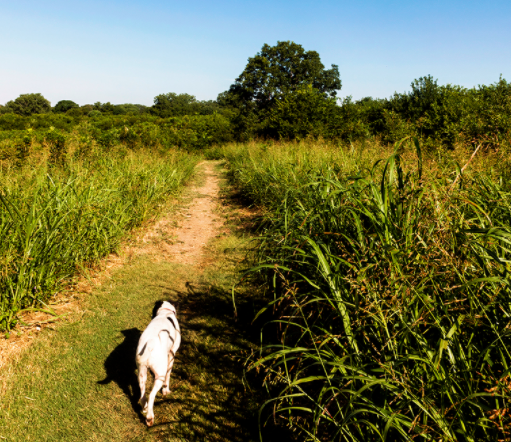
Muttley, Bill Grunnah’s dog, makes his way through the west side of Moss Park. (Photo by Danny Fulgencio)
He says that when he read the Advocate story about Moss Park, it broke his heart.
Bulloch worked for 30 years of his life with Ruth Andersson May, an early conservationist, artist and member of the Botanical Research Institute of Texas and the Lady Bird Johnson Wildflower Center. May, who died in 2014, long ago adopted the native grasslands portion of Moss Park in order to restore it to its natural state. Bulloch learned much of what he knows from her, he says. She is responsible for the towering sunflowers that have been obstructed by overgrowth at the park.
On a windy Wednesday he stands on the grass along Arborside, overlooking the section, which he already has begun restoring, at his own expense through his small Plano-based business Native Restoration.
“Ruth spent nearly $2 million getting it there,” he says, “not to mention the time.”
In addition to forming a volunteer agreement with Bulloch, the city brought in another pro, Roger “Plant Man” Sanderson of the Texas Discovery Gardens, which just received a grant from the National Fish and Wildlife Foundation for pollinator conservation efforts. Funds from this grant will partially go towards helping reseed and plant large swaths such as Moss Park with native, pollinator friendly species of plants.
Like Bulloch, Sanderson has a strong personal attachment to the park. (His old dog so loved the land, he says, that he’s buried out here.)
There are so few prairies left, the men explain, and if you leave them untouched, as we have seen at Moss Park, they won’t be prairies.
Nine million buffalo and pronghorn deer used to graze here. They are gone now, so it’s up to us, Sanderson says.
The experts point out that Moss’ prairies are especially rare, for many reasons, but, for one, because three types of land converge here — blackland prairie, cross timbers and grand prairies. Their aim is for people in the neighborhood to understand how special this place is; they hope local school children, for example, will be able to visit and learn from the land in its intended state.
City specialists overseeing the restoration project say there will be opportunities for volunteers to help. “The restoration efforts will include removal of the invasive woody vegetation and other non-native species and restore the native grasses and wildlfowers which make the blackland prairie community so unique,” according to a notice from Dallas’ Park Department.
“The Dallas Park and Recreation Department is grateful for the partnerships efforts of these groups in helping restore the vital blackland prairie at Harry S. Moss Park. The results will truly benefit the community for years to come,” adds assistant director Oscar Carmona.
Bulloch, Sanderson and Grunnah, who say they are the informal founding members of what will hopefully be a Friends of Moss Park group, agree volunteers will be essential to the park’s success.
We will continue to follow progress and happenings at Moss Park and volunteer opportunities.

